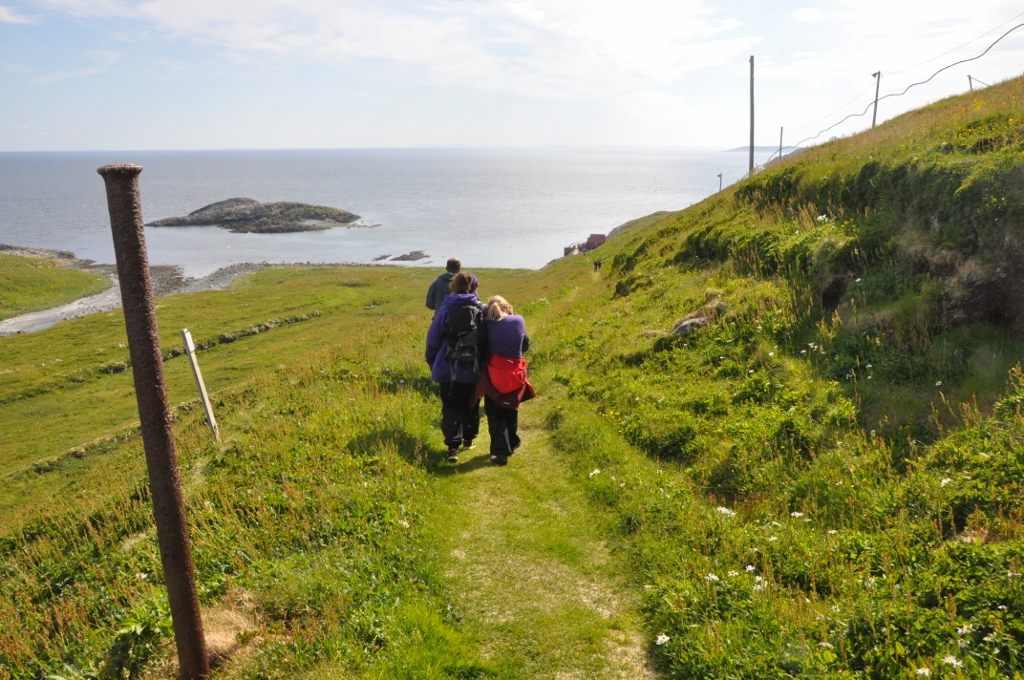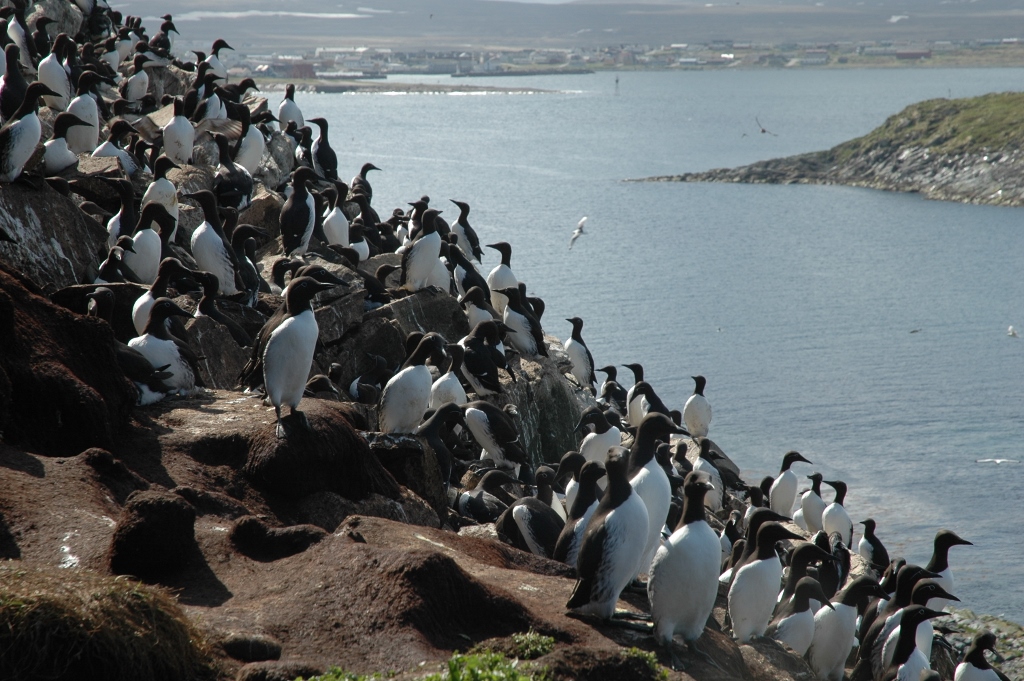Key site Hornøya
Hornøya is one of SEAPOP's key locations associated with the southern Barents Sea. It is part of the Hornøya and Reinøya nature reserve that was established by the Royal Decree of 28 January 1983. Research and monitoring of seabirds have been conducted on Hornøya for many years. Contact person: Tone Kristin Reiertsen and Kjell Einar Erikstad, NINA

Photo: Rob Barrett
Since 1980, Hornøya has been one of the reference sites of the national monitoring programme for seabirds, and several species have since been monitored and studied by researchers from both Norway and abroad. In 2005, Hornøya became one of the key sites in SEAPOP. Since the monitoring of seabirds on Hornøya started long before the establishment of SEAPOP, the colony can boast some of the longest time series on population numbers, adult survival and breeding biology of seabirds in Norway. Hornøya is also a reference area for long-term monitoring of environmental pollutants in seabird eggs.
Location and description
Hornøya (70° 23′ 16″ N, 31° 09′ 19″ E) is in East Finnmark, 2 km NE of Vardø with the Barents Sea as its nearest neighbor. Vardø is in one of the few areas of mainland Norway that has an Arctic climate, which means that the mean July temperature is under 10° C. Hornøya has a lush vegetation due to heavy bird fertilization. Although it does not have a particularly high number of nesting seabirds, the wide range of species characterizes this key location. The cliff is easy to reach and therefore very suitable for research and monitoring.
Access
Being so close to Vardø, access to Hornøya is simple compared to other seabird colonies. Being able to live in the lighthouse at the top of the island, researchers are also able to take advantage of the infrastructure related to the lighthouse. There are two landing possibilities on the island, the lighthouse quay on the east side, and a pontoon on the west side. There is a clearly-marked path from the pontoon that runs below and along the bird cliff and across to the east side where a track leads up to the lighthouse. From 1 March to 15 August, access off the path and track is forbidden. Special permission is needed for all research and monitoring activity within this time period.
Wildlife
The main bird cliff is on the west side of the island, and thousands of seabirds gather there every year to breed. Kittiwakes Rissa tridactyla, razorbills Alca torda, common Uria aalge and Brünnich’s guillemots Uria lomvia, puffins Fratercula arctica and shags Phalacrocorax aristotelis are the most numerous. In addition are a few fulmars Fulmaris glaciali and black guillemots Cepphus grylle scattered around the island, and on the flat and more open parts of the island, herring Larus argentatus and great black-backed gulls L. marinus, eiders Somateria mollissima and a few greylag geese Anser anser breed. In winter, king Somateria spectabilis and Steller’s eiders Polysticta stelleri occur in flocks around Hornøya and in spring, long-tailed ducks Clangula hyemalis, velvet Melanitta fusca and common scoters M. nigra may be seen. The white-tailed eagle Haliaeetus albicilla hunts along the bird cliff throughout the year. Other birds of prey seen on a regular basis are goshawk Accipiter gentilis, gyrfalcon Falco rusticolus and peregrine F. peregrinus. Crows Corvus cornix and ravens C. corax are also very common. A number of small bird species also nesting in the area, such as the red-throated Anthus cervinus,, meadow A. pratensis and rock pipits A. petrosus,, lapland bunting Calcarius lapponicus, wheatear Oenanthe oenanthe and white wagtail Motacilla alba.
Of mammals, both otter Lutra lutra and mink Neovison vison are often seen. The latter is a harmful, introduced species and can cause much damage to bird life during the nesting season. At Hornøya, measures are being taken to catch and remove this alien.
Human activity
Besides research and monitoring of seabirds, there is a lot of human activity on Hornøya. ‘In the old days’, egging and berry picking were important sources of income. The right to harvest gull eggs and pick berries is the privilege of the landowner, who, for Hornøya, is Vardø municipality. In recent years, fewer eggs have been collected due to a severe decline in gull numbers.
Tourism has increased considerably since the turn of the century, and increased focus on bird tourism has resulted in Hornøya becoming a favorite destination for birdwatchers and photographers. The Vardø Harbour authority transports visitors to and from the island several times a day during the spring and summer.

Photo: Kjell Einar Erikstad
Fieldwork
Field work has been carried out on Hornøya every year since 1980. The first researchers arrive in early May, and the last leave in late July. The species covered are kittiwakes, razorbills, common and Brünnich’s guillemots, puffins, shags, herring gulls and great black-backed gulls. Various parameters are relevant for the different species, and a variety of data is thus collected depending on the species. In addition to Norwegian researchers, there is a French research team that is investigating the mechanisms behind recruitment of young birds into a kittiwake colony and the biology and genetics of parasites (ticks) among the various seabirds. The Norwegian researchers count, ring and register seabirds and monitor their breeding success, phenology and diet. The data are used in impact studies of climate and human activity, such as fisheries and petroleum activities. A number of species are also equipped with light loggers that record the bird’s daily position throughout the year.


